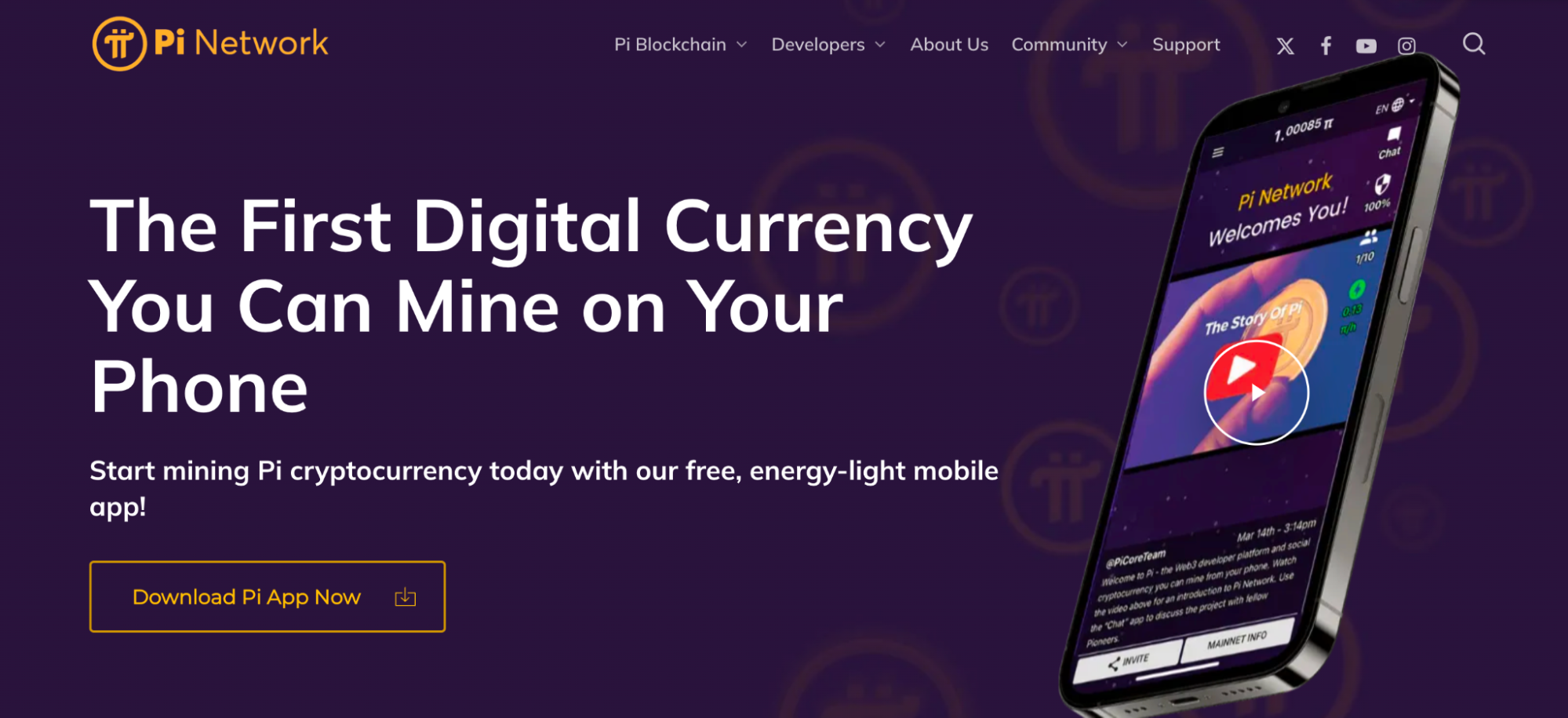Piコインのメインネットのローンチ価格予測:市場の期待と将来のトレンド
1. Piコインメインネットの概要
Pi Networkは、分散化された、低障壁のグローバル支払いネットワークを構築することを目指しています。2019年のローンチ以来、その革新的なマイニングメカニズムは数千万人のユーザーを惹きつけ、ユニークなエコシステムを創造しています。ネイティブトークンであるPiコインは、メインネットのローンチ後に支払い、取引、スマートコントラクトの媒体として機能します。
1.1 Piコインメインネットの開発段階
Pi Networkは段階的なアプローチを採用しています:
- テストネットフェーズ:初期のインフラテストと開発者のトライアル。
- Closed メインネット(2022年):ユーザーはKYC認証済みのPiをメインネットウォレットに移行できましたが、自由に取引することはできませんでした。
- オープンメインネット(予定):完全なローンチにより、取引所のリストや外部エコシステムの統合が可能になります。KYC完了とセキュリティ保証が保留中です。
1.2 技術的な特長
- コンセンサスメカニズム:Stellar Consensus Protocol(SCP)を使用し、低エネルギーのマイニングと高速な取引を実現します。
- エコフレンドリーマイニング:ユーザーは、高性能ハードウェアなしでソーシャル信頼ネットワークを介してマイニングします。
- 分散化されたアカウント:プライバシー保護付きのブロックチェーンによる取引
- スマートコントラクトの可能性:将来のアップグレードでDAppの開発をサポートする可能性があります。
1.3 マーケットポジショニング
- グローバルペイメント: 低コストで高速な取引。
- コミュニティ駆動型エコシステム:DAppsとコマースのために膨大なユーザーベースを活用します。
- フィアット通貨と暗号通貨の架け橋:ブロックチェーンの普及を促進します。
1.4 メインネット ローンチ タイムラインとインパクト
正確なローンチ日はKYCの進捕とセキュリティ監査に依存します。一旦ライブになると、Piコインの取引所へのリスティング(例:Gate.io)は流動性と価格に大きな影響を与えるでしょう。

Gate.ioでPiコインを取引する:https://www.gate.io/trade/PI_USDT
2. Piコインの価格に影響を与える主要要因
2.1 供給と需要
- 流通供給量:新しいコインの発行を減らす予想通りのデフレモデル。
- ユーザーデマンド:マイナーがPiを保持するか売却するかは、価格に直接影響します。
2.2 取引所リスティング
- 主要リスティング:トップ取引所(例:Binance、Coinbase)からのサポートは流動性と価格を押し上げる可能性があります。
- 取引ペア:USDT、BTC、またはETHとのペアリングは市場の魅力を高めるでしょう。
2.3 エコシステムの成長
- Merchant Adoption: Pi’s utility as payment would drive demand.
- DeFi 統合:将来の DeFi サポートによりユースケースが拡大する可能性があります。
2.4 マクロ経済状況
- 暗号市場トレンド:Bitcoin/ETHの好調なトレンドがPiの価格を押し上げる可能性があります。
- 規制:グローバルな仮想通貨政策が取引の利便性に影響を与える可能性があります。

3. Piコインメインネットのローンチ価格予測
3.1 価格範囲シナリオ
- オプティミスティック($1–$5):迅速な取引リスティング、強力なエコシステムの成長、そして強気の市況。
ベースケース($0.10–$1):採用が適度で需要が安定しています。
保守的($0.01–$0.10):初期のマイナーからの限られた取引所サポートまたは売り圧力。
3.2 キー価格ドライバー
- 取引所リスト: 主要プラットフォームからの即時流動性。
- ユーザーの行動: ホルダー vs. 販売者 ポストローンチ。
- エコシステムのマイルストーン: 商人の採用、DeFi/NFTの統合。
- 市場センチメント:ソーシャルメディアとインフルエンサーの影響。
3.3 期待されるボラティリティフェーズ
Piコインがメインネットでローンチされた後、価格は以下の段階を経る可能性があります:
1. 初期サージ(0–3ヶ月):ハイプと初期利益の取り込みによる高いボラティリティ。
2. 補正(3-12ヶ月):価格は安定し、焦点がユーティリティに移るとともに。
3. 長期成長(1年以上):価値は実世界の採用に依存します。
免責事項:予測は投機的です。暗号市場は非常に波乱がありますので、注意して投資してください。
4. Piコインの将来のトレンド
Pi Networkの長期的な価値は、価格だけでなく、エコシステムの完全性とユーザーによる実際の利用にも依存しています。
4.1 エコシステムの拡大
- Merchant Payments: 広範な受け入れが需要を維持するでしょう。
- DApps: 開発者の活動はトークンの有用性を高める可能性があります。
4.2 テクニカルアップグレード
- スケーラビリティ:低コストで高い取引量を処理する必要があります。
- スマートコントラクト:DeFiおよびNFTユースケースにとって重要。
4.3 競争の構図
Piは、イーサリアム、ソラナなどと競合し、継続的な革新とコミュニティ参加が必要です。

結論
Piコインの発売価格は、取引所のサポートからマクロ経済の動向まで、市場のダイナミクスを反映することになります。短期間のボラティリティは避けられませんが、長期的な成功は、強固なエコシステムの構築にかかっています。投資家は、投機よりもユーティリティを優先すべきです。
関連記事

Piコインを売却する方法:初心者向けガイド

Forkast (CGX): ゲームやインターネット文化向けに構築された予測市場プラットフォーム

Radiant Multi-Signature Attackを使用したBybitハックの分析を例に

$MAD: MemesAfterDark – The Ultimate Degen Token

Piノード:誰もが参加できるブロックチェーンノード
